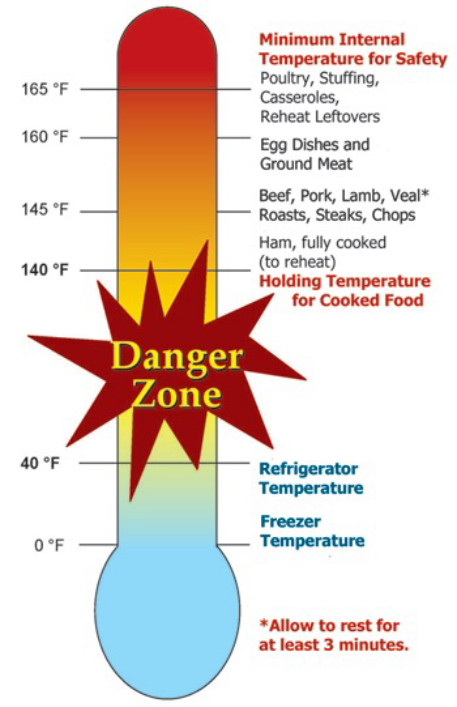A recent study from North Carolina State University (NCSU) looked at the temperatures of foods in home deliveries. Temperature is an essential aspect of food safety. ‘Temperature abuse’ occurs when raw or cooked foods are not held at temperatures required for safe storage. Most foods perish rapidly and should remain below 40⁰F to limit the growth of pathogenic bacteria and reduce spoilage. What they found was not reassuring.
Their team evaluated 12 different vendors, placing three orders per vendor over one month. Baseline performance was based on temperature, the use of coolants such as dry ice and gel packs, and transit times. Here is what they found:
Out of 12 companies:
- 10 shipped boxes with at least 1 item above 40⁰F.
- 7 vendors shipped boxes with at least one fruit or vegetable above 40⁰F.
- 6 vendors shipped boxes with at least one meat or poultry above 40⁰F.
- 55 out of the 72 boxes evaluated had at least one product over 40⁰F.
Concerning coolant use:
- 2 vendors shipped on dry ice - 17% of dry ice deliveries had at least one item above 40⁰F
- 10 vendors shipped using gel packs - 93% of gel pack deliveries had at least one item above 40⁰F.
How long? Transit times:
- The lowest average box temperatures (16⁰F) had 20 hours or less travel time.
- Transit times of 40 hours or more had much higher average box temperatures (59⁰F).
The take-aways are grim.
Over 76% of the boxes evaluated had at least one product over the recommended temperature for perishable food. That means that more than one product was probably above safe storage temperature. Dry ice is much more reliable as a coolant than gel packs. The gel packs failed to keep the boxes at the required temperature almost always (93% of the time). Transit times of 40 hours or more greatly increase the risk of pathogen growth, with temperatures approaching room temperature. As the transit time increases, the effect of ambient temperatures on the contents of food delivery boxes increases. If this study were conducted during the fall or winter, ambient temperatures would make these findings “seasonal lows.” During the hot summer months, a study would show more temperature abuse due to ambient heat.
 What was not revealed in the NCSU study was how long each item was above the recommended temperature. The FDA and USDA both offer guidelines agreeing that 2 hours is the maximum amount of time perishable food can remain between 40⁰F and 140⁰F, called the Danger Zone – when bacteria can grow rapidly. The food may still look and smell good but should not be consumed. The eater risks diarrhea, nausea, gastrointestinal distress, or worse. Better to toss the food than to toss your cookies. If the ambient temperature is above 90⁰F, only one hour is prudent.
What was not revealed in the NCSU study was how long each item was above the recommended temperature. The FDA and USDA both offer guidelines agreeing that 2 hours is the maximum amount of time perishable food can remain between 40⁰F and 140⁰F, called the Danger Zone – when bacteria can grow rapidly. The food may still look and smell good but should not be consumed. The eater risks diarrhea, nausea, gastrointestinal distress, or worse. Better to toss the food than to toss your cookies. If the ambient temperature is above 90⁰F, only one hour is prudent.
In an interview with Food Safety News, Joseph Battoe, the CEO of Varcode, a company making temperature-sensitive barcodes used to trace package temperatures during transportation, weighed in on monitoring the time and temperature of home-delivered foods.
“Many direct-to-consumer food companies are….in the dark. Current solutions do not deliver information back to the companies at any reasonably scalable cost to create a continuous improvement process. Box-by-box monitoring of temperature abuse would provide more accurate information related to food safety….”
Products that monitor temperature continuously over time would help food safety specialists assess risks, help vendors pinpoint challenges, and prevent foodborne illness caused by temperature abuse in home deliveries. The NCSU study is a wake-up call for the home food delivery industry. More data are needed to optimize packaging design, coolant use, coolant to food weight ratios, transit time limitations, and seasonal effects. We should applaud the proactive efforts of the Food Safety specialists at NCSU!




